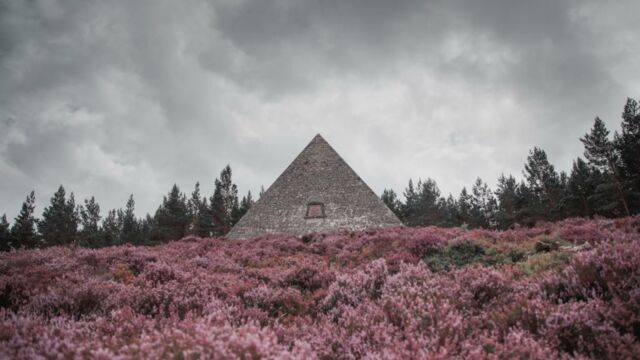Considered as one of the wonders of the world, the pyramids of Egypt are among the most remarkable creations of Antiquity. Although the Egyptian and Mayan civilizations were masters in the art of building such monuments, which we can see in Egypt and in modern-day Mexico, did you know that Scotland also enjoyed its very own treasure?
Discover our latest podcast
A pyramid in the Scottish Highlands
Indeed, Scotland has got its very own pyramid! In fact, Scottish people call this kind of place a 'cairn'. It is located at the top of a hill, hidden in the forest of the Highlands, situated in the North of Scotland, hence its name of 'high' land, compared with 'low' land.
One can wonder, what is a pyramid doing in the middle of the Scottish Highlands? The 'cairn' that overlooks the surrounding landscape is not recent, but it is also not as old as the ancient Egyptian or Mayan monuments.
Balmoral Castle grounds remain closed to the public and will open again in the spring.
— Balmoral Castle & Estate (@Balmoral_Castle) January 12, 2023
If it’s adventure you seek, discover the cairns walk and Prince Albert’s cairn also known as Scotland’s hidden pyramid!
Paid parking available in car parks, located next to the A93 at Crathie pic.twitter.com/XDpHwJw3O4
Read more:The world's largest pyramid isn't actually in Egypt like everyone thought
The heartbroken Queen
It was Queen Victoria who decided to build it. Completed in 1862, the 'cairn' was erected in honour of her late husband, Prince Albert who died in 1861 at the age of 42. Moreover, an inscription, or even a love note, is engraved in the center of the pyramid:
In memory of the beloved Albert. The great and good Prince Consort. Erected by his heartbroken widow, Victoria R. August 21, 1862.
The Queen was indeed fond of this type of monument and had a number of them built on the Balmoral estate, which she considered as her 'dear Highland paradise.' The pyramid, which also serves as a castle, is still used today as a private residence by the Royal Family, who still visit it every summer. That's an unusual holiday home!
A secret, Scottish pyramid in the heart of the #Cairngorms National Park! 🤯🌲 #RespectProtectEnjoy 📍 Prince Albert’s Cairn, Balmoral Estate 📷 IG/scott_cameron9 pic.twitter.com/9wBdgoKlSa
— VisitScotland (@VisitScotland) July 16, 2021
Read more:King Charles won’t sit on the late Queen Elizabeth’s throne during his reign, here’s why
The history of the 'cairn'
The etymology of the word 'cairn' comes from the Celtic 'karn' which means 'rock, stone'. With the evolution of the Scottish language, known as Alba, the word turned into 'carn' which applies to a 'hill'.
The Celtic word has travelled beyond the borders of the United Kingdom to arrive in France, more specifically in the Brittany region. Over time, the Britton word became 'karn' and is used to designate the location of places like the city of Carnac. We can also think of the fortified city of Concarneau to be described as a 'karn'.
Lovely wee trip up north to Royal Deeside yesterday to visit the Prince Albert Cairn. @VisitScotland#deesidepic.twitter.com/dBrGHJLP7z
— Grant Wallace (@gwall81) January 16, 2022
If you are an avid traveller, the pyramid is located within the Easter Balmoral and it takes at least an hour and a half to reach it, enough to enjoy a pleasant walk within the famous Highlands breathtaking landscapes. Be careful though, as the last hill is rather steep and quite often muddy. Adventurers will love it, but remember to wear strong hiking shoes that day!
1 of 11 amazing cairns to discover on Balmoral Estate! 🤯🗺️
— VisitScotland (@VisitScotland) January 12, 2022
📍 Prince Albert's Cairn, @VisitCairngrms 📷 IG/ali.horne #RespectProtectEnjoypic.twitter.com/B1fhEE8UIP
This article has been adapted from Gentside FR.
Read more:School students discover a 3,000-year-old Egyptian scarab in a surprising location
Sources used:
SecretGlasgow: The Secret Scottish Pyramid: What Is It And Where Can You Find It?















